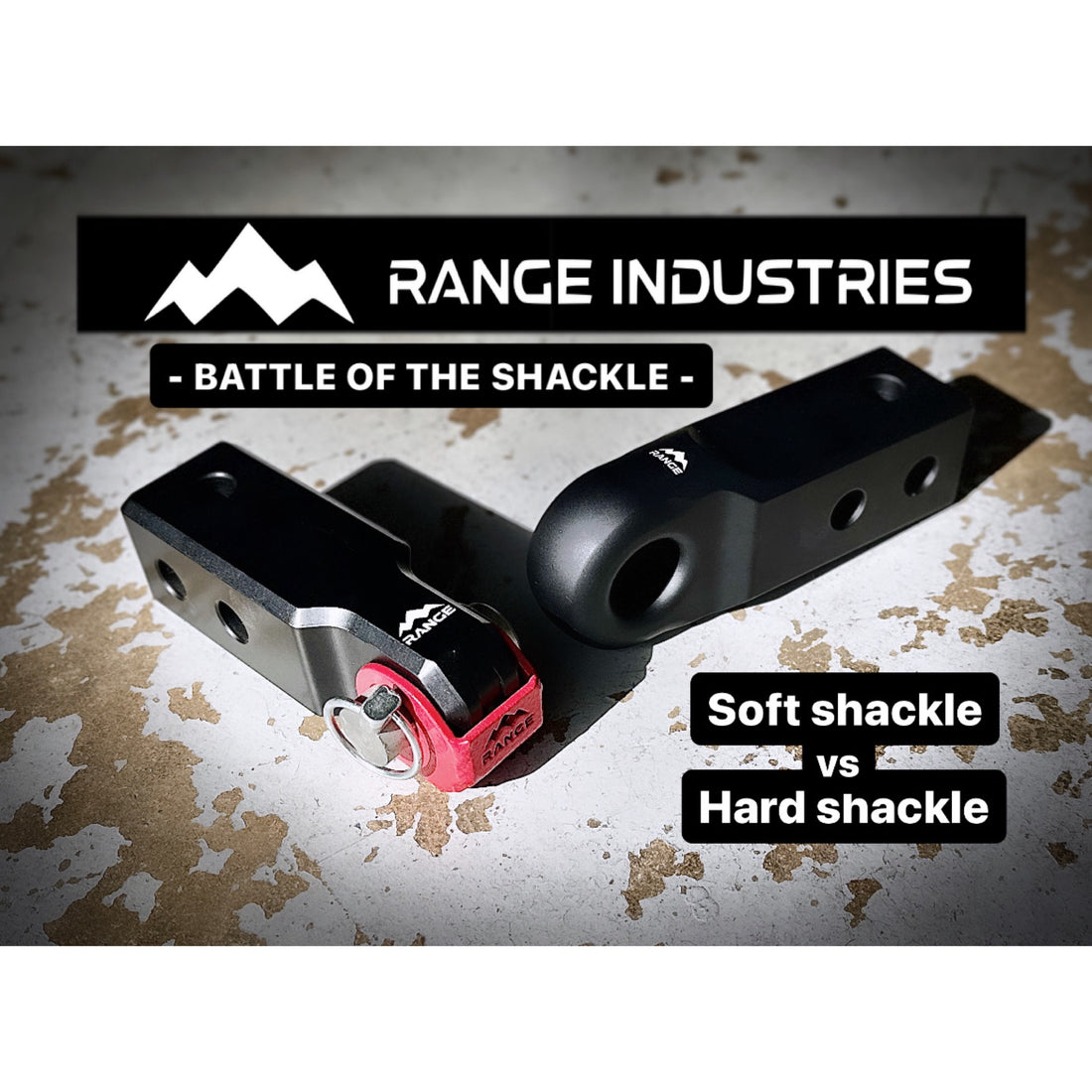Here at Range Industries we understand there is a time and place for everything, and with that, there are certain measures we put into each of our products, and our recovery gear is one of the highest examples of that. The reality is that when you use a Range Industries recovery product (or any recovery product) you should have confidence that you, and the safety of your vehicle, are in good hands! With that let's break down the differences between shackles and see what may be best for you and your needs.
Soft shackles and hard shackles are both types of connecting devices used in various industries, particularly in off-road applications. Each has its own advantages and disadvantages, and the choice between them depends on factors such as load requirements, ease of use, and safety considerations. Here's a brief comparison:
-
Material:
- Soft Shackles: These are typically made from high-strength synthetic fibers such as Dyneema or Spectra. They are lightweight, flexible, and have high tensile strength.
- Hard Shackles: These are usually made from metal, such as steel or stainless steel. They are rigid and durable but heavier than soft shackles.
-
Strength:
- Soft Shackles: Despite being lightweight, soft shackles can have comparable or even higher breaking strengths compared to metal shackles of similar sizes.
- Hard Shackles: Metal shackles are known for their robustness and are often used in high-load applications where extreme strength is required.
-
Flexibility:
- Soft Shackles: They are more flexible than hard shackles, making them easier to handle and manipulate, especially in tight spaces.
- Hard Shackles: Being rigid, they offer less flexibility in terms of attachment angles and are more cumbersome to work with in certain situations.
-
Safety:
- Soft Shackles: They are generally considered safer than metal shackles because they are less likely to cause damage or injury if they fail. When under extreme load, they tend to stretch and deform rather than breaking abruptly.
- Hard Shackles: While strong, metal shackles can become hazardous projectiles if they break under load, posing a safety risk to nearby personnel or equipment.
-
Corrosion Resistance:
- Soft Shackles: Synthetic fibers are inherently resistant to corrosion, making soft shackles ideal for use in marine environments or where exposure to moisture and salt is a concern.
- Hard Shackles: Metal shackles, especially those made from stainless steel, offer good corrosion resistance but may still degrade over time, particularly in harsh conditions.
-
Cost:
- Soft Shackles: They can be more expensive upfront compared to metal shackles, but their durability and ease of use may justify the cost in certain applications.
- Hard Shackles: Metal shackles are generally more affordable, but their maintenance and potential for damage may incur additional costs over time.
In summary, the choice between soft shackles and hard shackles depends on factors such as load requirements, environmental conditions, ease of handling, and safety considerations. Soft shackles are often preferred for their lightweight, flexible, and safer characteristics, while hard shackles are chosen for their strength and durability in heavy-duty applications.
The choice is yours what shackle best suits your needs but having a proper receiver goes in tow (pun; please hold the laughter). Below are the specs of our shackle receivers.



